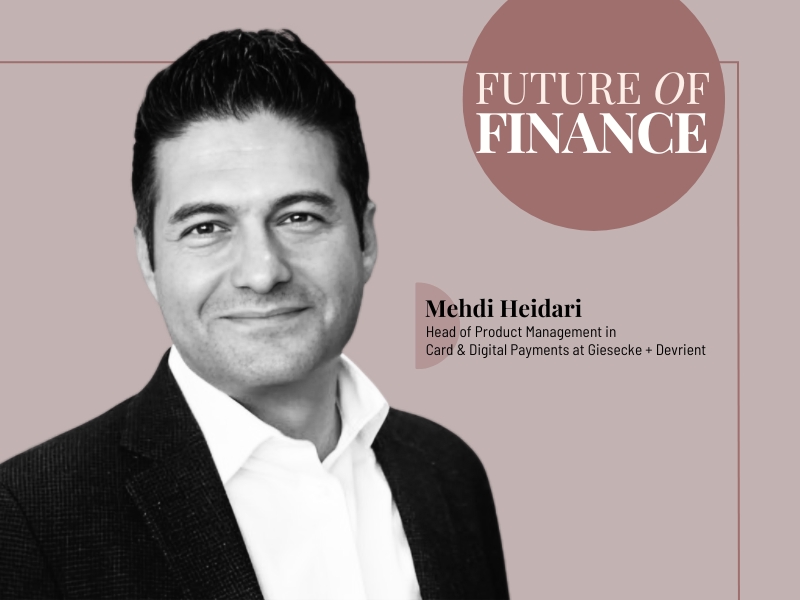Societal adoption of new technology has created a new generation of consumers that expect services to be immediately available at all times, and younger demographics especially have expressed a preference for always-on digital services to meet this need. As a prominent example of this growing trend, 99% of Gen Z and 98% of millennials use mobile banking apps to handle the majority of their financial needs.
At t the same time, however, 43% of Gen Z consumers say that brick-and-mortar bank branches remain important because they offer peace of mind. So where does this leave the traditional providers, such as banks? They are now having to reposition towards a mix of physical and digital services, or “phygital” offerings, to provide a unified seamless experience for customers.
The challenge is banks are often held back by legacy mindsets and complex systems, preventing phygital banking services from becoming a reality. The solution to the issue? Adopting a digital-first mindset when developing their products and services can help banks bring phygital banking to life.
Phasing in an “Issuance l as a service” model from the outset
Blending the convenience, security and flexibility of different payment methods, phygital services are crucial for meeting the speed, simplicity and hyper-personalised services expected by consumers today.
Key to digital-first implementations in this regard is a flexible platform that can deliver these solutions, such as “Issuance as a Service” (IaaS) which is similar to other “as a service” models. Such a platform makes it easier for banks and financial service providers to access and operate intelligent solutions for a phygital customer experience. After onboarding once, the unified platform also allows issuers to access all relevant apps or APIs.
For example, consider the first interactions a consumer makes with a bank they’ve just signed up with: the issuance of their payment card. A digital-first approach would allow them to complete the application using a mobile device via an automated, digital onboarding experience. An Issuance-as-a-Service approach can be applied to this process, which has surged in popularity as the number of payment cards issued via digital platforms is set to reach 1.3 billion by the year 2027.
Once the application is approved, the customer can also personalise their card’s artwork using a sophisticated AI-based designer tool. They can also make this AI-generated imagery completely unique by assigning a non-fungible token (NFT) to it. This personalised card design will then be printed on the physical card as well as displayed via digital channel (ie virtual card). Accessible features, including QR codes, braille or notches can be included for assisted activation, alongside passwordless authentication for convenience. A virtual version of the physical card is immediately set up in the mobile app as part of a digital welcome pack and able to be used immediately, all in a fraction of the time it takes for the physical card to be delivered.
Keeping physical customer touchpoints alive
While new digital services are paramount, an integrated phygital banking model must continue to appreciate the importance of physical customer touchpoints, and a digital-first mindset doesn’t eliminate them. Instead, digital services can be used for more basic banking needs, such as transactions and transfers via an app, while physical touchpoints can remain for those who prefer an in-person interaction or require more advanced services.
For example, mortgage applications or investment advice services can still be offered via in-person formats to deliver reassurance to customers. These services may involve complex conversations that require tailored expertise and real-time responses from specialist staff. Banks and other financial institutions can push for cross-product utilisation across platforms based on customer needs. This provides flexibility to the customer and not only increases acquisition rates but retention rates as well.
Agility in the face of increased competition
Phygital banking, underpinned by a digital-first mindset, is not just important in meeting societal expectations for both digital and physical services, but also for staying ahead in a fiercely competitive financial market. Neobanks for example, operate purely in the digital space without bank branches and are set to gain more UK app users than legacy banks for the first time in Q1 of 2025. By adopting neobank’s digital agility and customer-centric innovations, retail banks can look to leverage their established trust and physical presence to offer a seamless, personalised “phygital” experience that combines the best of both in-person and digital banking.
The appropriate digital solutions, such as supplying card credentials via a secured digital channel and APIs, can also allow the more traditional banks to offer instant services to customers without being hindered by their existing IT infrastructure. Fully tokenised digital cards can then follow once the underlying IT environment is in place to support them, meaning that banks don’t lose valuable customers while waiting for a fully digital solution to be deployed.
Offering immediate, customer-friendly services
Phygital integration is a necessity for traditional banks aiming to remain relevant and competitive but also presents a unique challenge for financial institutions. To bridge this gap, banks must adopt a digital-first mindset in developing their products and services. Phygital banking can enable banks to blend the convenience, security and flexibility of digital services with the reassurance of physical communications, and IaaS can support banks in implementing flexible these models.
By implementing digital solutions that work within their existing infrastructure, banks can offer immediate, customer-friendly services without losing ground to more digitally native competitors.
About the Author
 Mehdi Heidari is the Head of Product Management in Card & Digital Payments at Giesecke + Devrient. He is a seasoned product management and business development leader, and specializes in transforming cutting edge ideas into revenue-generating solutions.
Mehdi Heidari is the Head of Product Management in Card & Digital Payments at Giesecke + Devrient. He is a seasoned product management and business development leader, and specializes in transforming cutting edge ideas into revenue-generating solutions.












